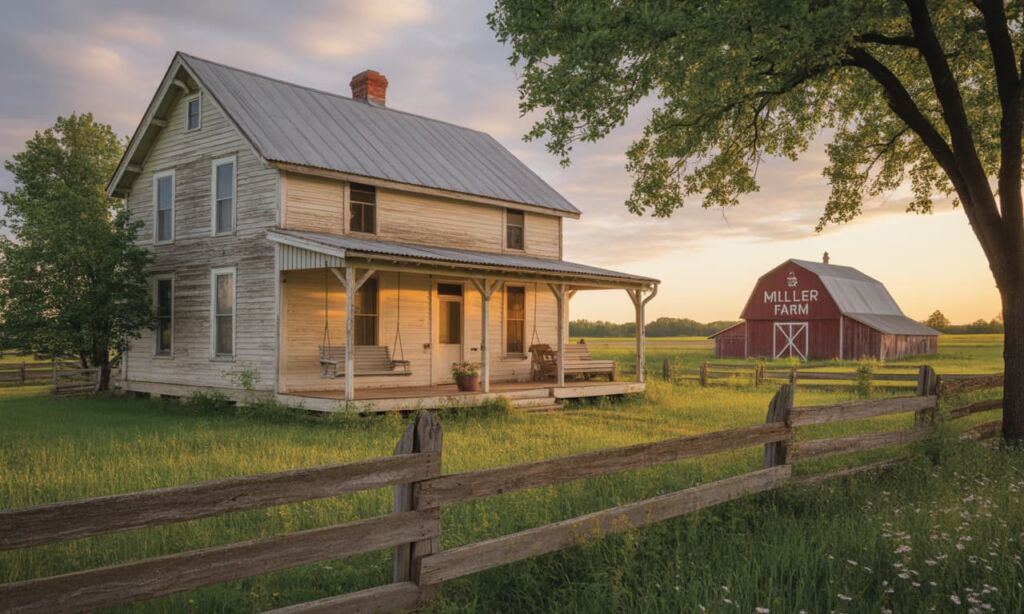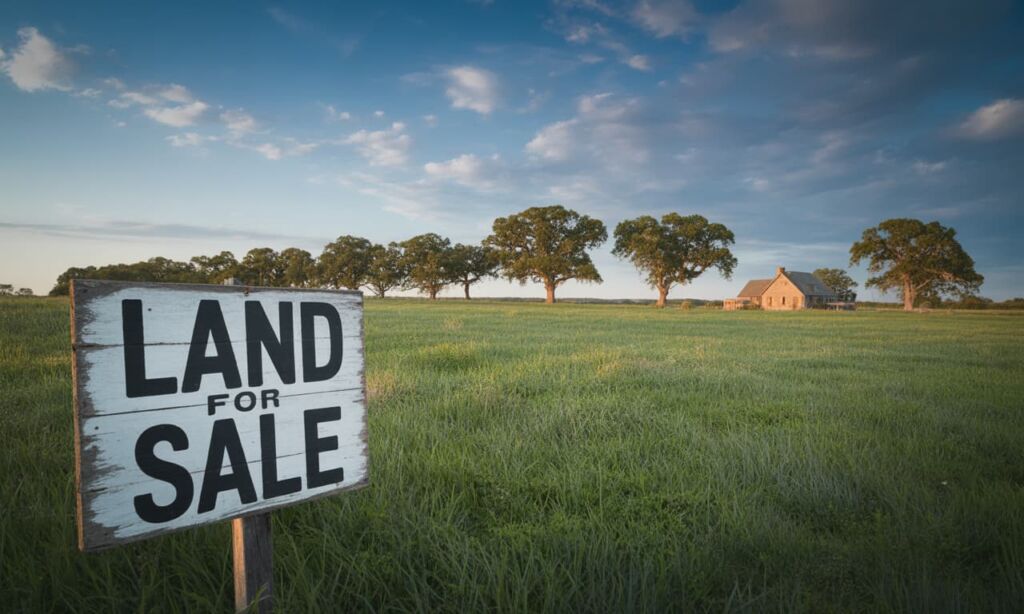This blog post shows you exactly how to buy land (step by step) and how to build a house without the stress, by guiding you through site selection, due diligence, financing, and construction planning in a clear, manageable way. Buying land and building a house is like planting a seed and watching it grow into something uniquely yours. It’s a big, exciting journey, but it can feel overwhelming if you don’t know where to start. Whether you’re dreaming of a cozy cabin in the woods or a sprawling family home in the suburbs, this process requires careful planning, a bit of research, and a whole lot of patience. In this article, I’ll walk you through the essentials of how to buy land and build a house, breaking it down into manageable steps. From picking the perfect plot to hammering the last nail, here’s everything you need to know to turn your vision into reality.
Finding and Buying the Perfect Plot of Land

First things first: you need a piece of land to call your own. But not just any patch of dirt will do. Buying land is about aligning your goals with what’s out there. Are you looking for a quiet rural retreat or a lot in a bustling new development? Start by identifying what you want from your land. Is there space for a big garden? Proximity to schools? Or maybe just killer views? Once you’ve got a vision, set a budget. Land prices vary wildly depending on location, size, and features.
Don’t forget to factor in extra costs like taxes, closing fees, or potential improvements like grading or utilities. Speaking of location, this is where things get fun (and a little tricky). A great spot might check all your boxes, but you’ve got to dig deeper. Research zoning laws to make sure you can build the type of house you want. Some areas are zoned for residential, others for agriculture or commercial use. You don’t want to buy a plot only to find out you can’t build your dream home.
Next, check for utilities and access. Is there water, electricity, or sewer available? If not, you might need to budget for drilling a well or installing a septic system. Also, confirm the land has legal access, like a road or easement, so you’re not stuck with a gorgeous plot you can’t reach. Finally, hire a surveyor to map out the property’s boundaries and check for any surprises, like encroachments or easements you didn’t know about. A good surveyor is worth their weight in gold to avoid headaches later.
Building Your Dream Home: From Vision to Reality
You’ve got your land, awesome! Now it’s time to turn that empty plot into the home you’ve been dreaming about. This is where the magic happens, blending your vision with some smart planning and a great team. Building a house isn’t just about hammering nails; it’s about creating a space that’s uniquely yours.
Below, I’ve laid out the key steps in simple bullet points to guide you through the process of building your dream home, from design to move-in day.
- Hire an Architect or Designer: Start by teaming up with a professional to bring your ideas to life. Share your vision, maybe a cozy wraparound porch or eco-friendly solar panels, and let them craft a design that’s both beautiful and practical for your land’s unique features. Their expertise will ensure your home fits perfectly with the plot and your lifestyle.
- Secure the Necessary Permits: Before any construction begins, check with your local government for required permits. These might include building permits, environmental approvals, or special permits for areas like flood zones. Skipping this step can lead to hefty fines or even having to tear down your work, so make sure everything’s in order.
- Choose a Reliable Builder: Find a licensed, insured builder with a solid track record. Check their past projects and ask for references to ensure they’re up to the task. A good builder will guide you through every stage, from laying the foundation to installing the roof, keeping your project on track.
- Plan Utilities and Infrastructure: Make sure your land has access to essentials like water, power, and sewer. Suppose it doesn’t. Work with your builder to install systems like a well, septic tank, or power lines. These unglamorous details are critical to making your home functional.
- Stay Involved During Construction: Keep tabs on the build by visiting the site and staying in touch with your builder. Ask questions and stay engaged to catch any issues early. Building a house can take six months to a year or more, so patience is key while your dream takes shape.
You’re well on your way to turning that patch of land into a home you’ll love for years to come. With a solid plan, the right team, and a bit of patience, you’ll soon be walking through your front door.
Financing Your Land and Home: Options and Considerations
Buying land and building a house isn’t cheap, so let’s talk money. Financing land is a bit different from buying an existing home, and you’ve got a few options. Land loans are available, but they often come with higher interest rates and stricter terms than traditional mortgages. Lenders see raw land as riskier because it doesn’t generate income like a house does. You’ll typically need a solid credit score and a down payment of 20-50%.
If you’re building right away, consider a construction loan. These cover both the land purchase and building costs, rolling into a single loan. You pay interest only during construction, and once the house is done, it converts to a standard mortgage. Another option is seller financing, where the landowner acts as the lender, letting you pay in installments. This can be great if you’re struggling to qualify for a bank loan, but read the fine print carefully.
It’s also worth understanding the types of land you can buy. Raw land is undeveloped, with no utilities or roads, making it cheaper but harder to finance and develop. Improved land has some infrastructure, like water or electricity, making it pricier but easier to build on. Lots, often found in subdivisions, are ready-to-build parcels with utilities and access already in place. Each type affects your budget and timeline, so choose based on your goals and resources. Shop around for lenders who specialize in land or construction loans, and don’t be afraid to negotiate terms. A little legwork here can save you thousands in the long run.
Mistakes to Avoid When Buying Land and Building a House

Building your dream home on a piece of land is thrilling, but it’s easy to stumble if you’re not prepared. The process of buying land and constructing a house is full of potential traps that can turn excitement into frustration. From zoning mix-ups to budget blowouts, a few missteps can derail your plans.
Here are the key mistakes to avoid, along with tips to keep your project on track.
- Skipping Due Diligence on Land Purchase: Never sign a deal without checking zoning, utilities, and access. A friend once bought a gorgeous plot, only to find it was zoned for commercial use, and no houses were allowed. Always research these details to ensure the land fits your plans.
- Underestimating Costs: Building a house always costs more than expected. Budget at least 10-20% above your estimate for surprises like weather delays or rising material prices. Don’t spend everything on the land; save cash for permits, utilities, and construction.
- Hiring the Wrong Team: A shady builder or inexperienced architect can ruin your project. Thoroughly vet everyone, check reviews, ask for references, and avoid picking the cheapest option just to save a buck. The right team makes all the difference.
- Neglecting a Surveyor: Skipping a surveyor can lead to big problems, like building on someone else’s land or facing boundary disputes. Hire a professional to map out your property’s boundaries and avoid costly legal headaches.
- Rushing the Timeline: Building a house takes time; don’t rush it. Hurrying can lead to mistakes, like pouring a foundation before testing the soil. Plan carefully and be patient to ensure everything is done right.
Steering clear of these mistakes will keep your dream home project on solid ground. Take your time, do your homework, and build a reliable team to guide you.
Quick Checklist for Buying Land and Building a House
- Define your goals and set a realistic budget.
- Research zoning laws, utilities, and access for your land.
- Hire a surveyor to confirm boundaries.
- Work with an architect to design your home.
- Secure permits before construction starts.
- Choose a reputable builder and stay involved during construction.
- Explore financing options like land or construction loans.
- Double-check everything to avoid costly mistakes.
Ready to start your journey? Contact The Land Method for expert help finding profitable land and development opportunities. They’ve got the know-how to guide you every step of the way. Happy building!
Conclusion
Buying land and building a house is a massive undertaking, but it’s also one of the most rewarding things you can do. From picking the perfect plot to designing a home that’s uniquely yours, every step brings you closer to a place you can truly call home. Just remember to do your homework, budget wisely, and surround yourself with a solid team. Mistakes happen, but with careful planning, you can sidestep the big ones financial security. The best investment is the one that aligns with your financial strategy and future aspirations.
Ginis Garcia is a seasoned real estate investor with over 14 years of experience helping both new and experienced investors achieve their goals in the housing and land markets.
- Ginis Garciahttps://thelandmethod.com/author/thelandmethod/
- Ginis Garciahttps://thelandmethod.com/author/thelandmethod/
- Ginis Garciahttps://thelandmethod.com/author/thelandmethod/
- Ginis Garciahttps://thelandmethod.com/author/thelandmethod/


